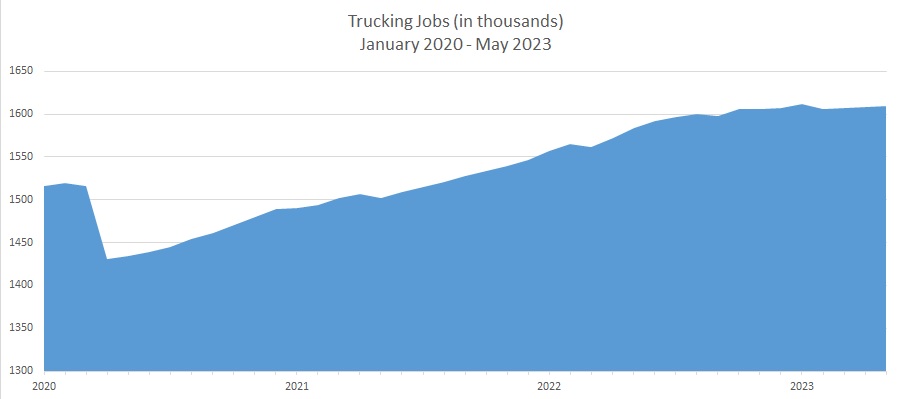Trucking jobs up slightly, but down compared to January
Trucking jobs experienced a modest increase in May, while the transportation sector as a whole also saw an increase in jobs.
According to the latest numbers from the Bureau of Labor Statistics, 600 trucking jobs were added to the economy in May. Although May experienced an increase, jobs are still down compared to January after a sharp decrease in February.
Revised numbers show an increase of 1,000 trucking jobs in April and an increase of more than 1,000 jobs in March. Those revised numbers indicate a drop of about 2,000 jobs for each month compared to preliminary numbers.
David Spencer, vice president of market intelligence at Arrive Logistics, told Land Line that the recent trucking job growth defies expectations considering declining truckload rates. In the long term, however, trucking employment is reaching a plateau.
“I continue to note the combination of owner-operator capacity and the shift to company jobs, as well as the growth to support an increase in truckload demand in areas such as nonsingle family housing construction and oil and gas drilling,” Spencer said. “However, the stability in the long term points to carriers being more patient through this rate cycle, potentially as a result of having cash reserves on hand due to the highly elevated rates seen the past few years.”
Year to date, trucking jobs are up by more than 2,000, thanks to a relatively strong month in January.
Last year, trucking jobs went up by nearly 61,000.

Accounting for all transportation sector jobs, employment is up by more than 24,000 jobs. Since the pandemic, transportation sector jobs have only dropped three times: in April 2021 (minus 12,900 jobs), in November 2022 (minus 37,100) and again in February (minus 20,500).
Transit/ground passenger transportation experienced the largest monthly increase (11,800 jobs), followed by couriers/messengers (8,200) and air transport (3,100). Four subsectors experienced a decrease in jobs: warehousing/storage (minus 1,900), scenic/sightseeing transportation (minus 1,000), pipeline transport (minus 100) and rail (minus 100).
Based on revised numbers, employment in the transportation sector rose by nearly 4,000 in April (down nearly 7,000 jobs compared to preliminary numbers) and increased by more than 16,000 in March (up more than 2,000 jobs).
Year to date, transportation employment is up by more than 58,000 jobs. For 2022 overall, transportation employment increased by nearly 261,000 jobs.
Month to month, wages decreased in May. Average weekly earnings of all employees in the transportation and warehousing sector decreased by $2.38 cents to $1,092.17. Compared to May 2022, weekly earnings are up $23.72. Accounting for only production and nonsupervisory employees, average weekly earnings increased from $1,033.13 in April to $1,036.35. Weekly earnings are up $56.57 compared to last May.
Across all industries, nearly 340,000 jobs were added to the economy. However, the unemployment rate jumped by 0.3 percentage points to 3.7%. Compared to the previous year, the unemployment rate for transportation and material moving occupations increased from 5% to 5.6%.
According to the Bureau of Labor Statistics, the consumer price index has jumped by nearly 5% over the past 12 months. The 0.4% monthly increase in April was broad-based, with the indexes for shelter, gasoline, and food being the largest contributors. The index for all items less food and energy rose 0.4%, up 5.5% over the year. LL









